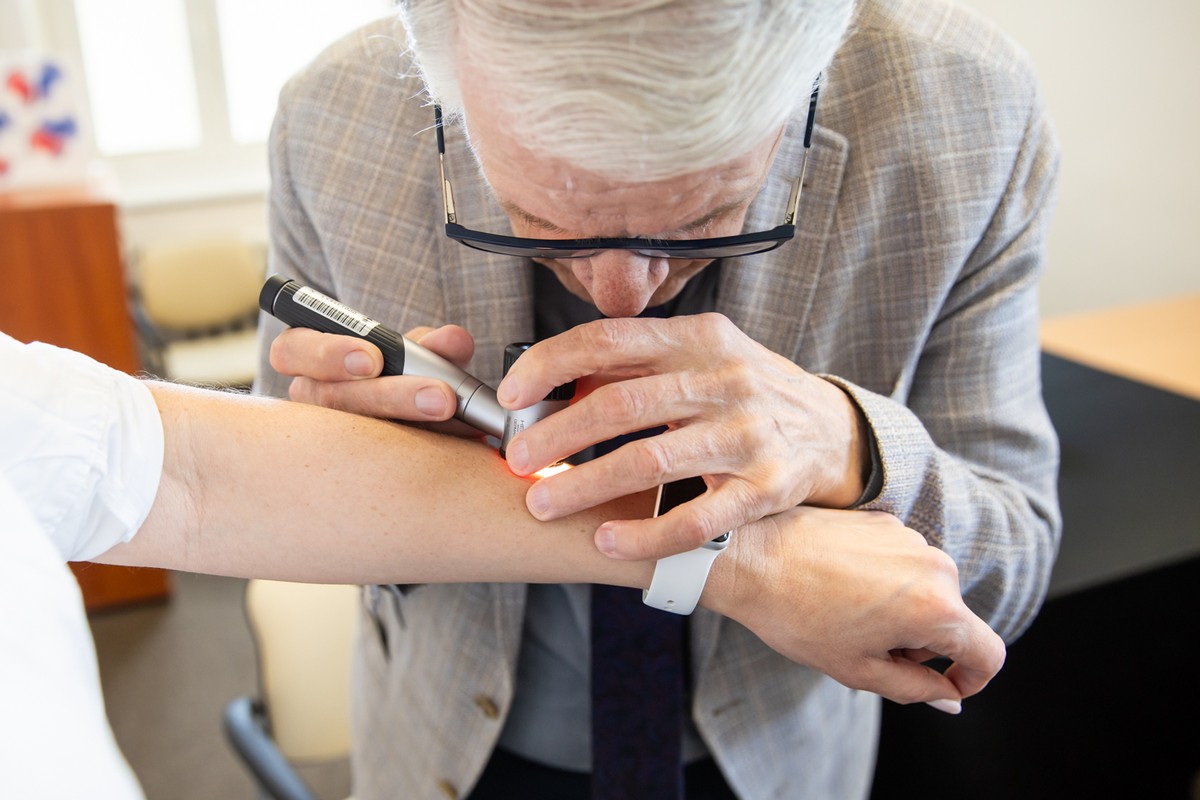
Get Tested – Save a Life!
An interview with Dr. Tomasz Mierzwa, specialist in general and oncological surgery, coordinator at the Department of Prevention and Health Promotion at the Marshal’s Oncology Centre in Bydgoszcz.
Why are preventive screenings so important in cancer prevention?
We divide cancer prevention into two main branches: primary prevention and secondary prevention. Preventive screenings are a form of secondary prevention – that is, measures aimed at the early detection of cancer or conditions that could lead to cancer. Primary prevention, on the other hand, consists of a set of actions that we can all take to reduce the risk of developing cancer. The European Code Against Cancer lists 12 recommendations we should follow in our daily lives to truly lower the risk of cancer.
And believe me – nearly 80% of cancer prevention efforts are in our own hands. As for screenings – I think they’re still somewhat underestimated in Poland. But they are one of the most essential elements of cancer diagnostics. The idea is to screen people on a population level – that is, individuals who have no symptoms but fall within a certain age range are tested for a given disease.
The best example is mammography screenings. This preventive program is targeted at women aged 45–74, and these patients, every two years, without a referral and completely free of charge, undergo preventive screening. Out of every thousand women screened, fifty will be referred for further testing due to the detection of some kind of breast abnormality. But only five out of those thousand – let me repeat, five out of a thousand! – will turn out to be actual cancerous lesions, most often very early-stage, just a few millimeters in size.

Dr Tomasz Mierzwa, fot. Andrzej Goiński/UMWKP
We treat these changes very differently today than we did 20 years ago. We’re talking about so-called breast-conserving therapy, which means we no longer need to perform mastectomies, but instead remove the tumor with an appropriate margin of healthy tissue.
During such an operation, we also check whether the axillary lymph nodes contain any cancer cells—and if they don’t, we do not remove them. This is another major advancement, because just over twenty years ago we had to remove lymph nodes in all patients.
In such cases, we can also avoid systemic treatment—that is, chemotherapy, adjuvant therapy, or other cancer-targeted drugs. However, the fact that we have access to such targeted therapies—specifically targeting tumor receptors—is itself a huge leap forward.
We are now beginning to see the first effects of the preventive programs that have been implemented over the past several years.
Although the number of breast cancer diagnoses continues to rise, we’ve managed to halt the upward trend in mortality. That is progress, although we still have a long way to go—our indicators are still worse than those of the best-performing European countries.
Another example is the Pap smear, which detects either cancerous changes or those that may lead to cancer. It’s worth noting that cervical cancer is now largely dependent on the presence of HPV (human papillomavirus) in the body, a virus that is essentially ubiquitous on adult human skin.
We are currently on the verge of updating this part of preventive care, as the Ministry of Health has decided to expand the screening program to include liquid-based cytology—a modern method in which a sample from the cervix is collected into a liquid medium, reducing the risk of diagnostic error. To put it simply, we will first look for the presence of HPV in the sample. Only if the virus is detected will a cytological examination be performed—from the same material. And only those women considered at risk for cervical cancer will be called in for further diagnostic evaluation.
Another important screening exam is for colorectal cancer, namely a colonoscopy. It’s a test with a rather poor reputation.
“I fainted!” — that’s how Harrison Ford once described his own colonoscopy at a film gala.
But that’s mostly legend. In the hands of an experienced colonoscopist, the exam takes about 20–25 minutes, and while it does involve some discomfort, it’s generally manageable.
For patients who are especially anxious or who’ve had previous abdominal surgery (and for whom the exam may be more difficult), we perform colonoscopies under general anesthesia.
This program is dedicated to people aged 50 to 65, who should have the procedure done once every 10 years—once every 10 years!
In this test, we detect polyps—benign growths—in about 30% of patients. Some of these polyps can develop into colorectal cancer within a few years, so we remove them during the colonoscopy.
Without exaggeration, it’s fair to say that undergoing a colonoscopy can save your life.
There is also a potential change being considered in this area of prevention—the idea is to replace the colonoscopy with a fecal occult blood test in the first stage. Only patients with a positive result would then be referred for a colonoscopy.
That said, I must point out that colonoscopies have recently been gaining popularity. People are beginning to believe that this decision really impacts their lives—it helps avoid colorectal cancer, surgery, and systemic treatment. It’s something that truly cannot be overstated.

Dr Tomasz Mierzwa wykonuje badanie dermatoskopowe w kierunku czerniaka skóry, fot. Andrzej Goiński/UMWKP
They say that not all medical exams are created equal. So where should you get tested to be confident in a diagnosis, for example, one resulting from a mammogram?
The National Health Fund (NFZ) sets certain minimum requirements that must be met for tests to be performed as part of the [government] screening program. These requirements concern the equipment, the personnel, and the radiologists—there must be two of them for a mammogram to be properly interpreted. If there is a disagreement between them, a third radiologist steps in to provide an independent, decisive interpretation. We have to trust that if a facility was approved through the NFZ’s competitive process, it means it meets all the necessary criteria. Additionally, once a year, both mobile and stationary mammography units undergo inspections to ensure the equipment still meets the standards and that all necessary tests are being properly conducted.
[It’s worth knowing that in breast cancer prevention,] we are still far from a population-wide success [in Poland]. Only 35–40 percent of eligible women undergo screening. That’s too low. We should aim for 75 percent.
Is it worth getting tested at the same facility each time?
Yes, I strongly recommend it, because comparing the current mammogram to the one from two years ago is extremely important. We need to see whether there has been any change in the image—whether a current anomaly was already present in the previous scans, or if it’s new.
Are preventive screenings generally accessible in our country?
They are absolutely accessible—and I say that with full responsibility. There is a network of stationary mammography labs, a large fleet of mobile mammogram units, and many clinics that offer Pap smears. As for colonoscopies, in the Kujawsko-Pomorskie Region, if I remember correctly, there are seven centers performing them.
Let me put it this way: the equipment is available, the staff is trained. I see the problem elsewhere—in patient awareness. What good is it if a mammobus arrives in a town but, to put it mildly, is not crowded with patients? Despite repeated outreach, despite sending invitations by mail or calling patients directly, we still see low turnout. And that’s the real issue—the lack of willingness among women to get screened and to understand how crucial this is. Many women still say they avoid screening out of fear of a potential diagnosis. But that’s a bit like burying your head in the sand. If I don’t go for a test, does that mean my breasts are healthy? No—it means my breasts are unexamined. If cancer has already begun developing, it will continue to progress.
July 25, 2025


